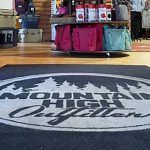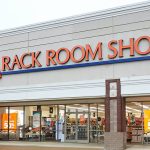The Timberland Company has launched a new environmentally-friendlier packaging for its footwear products and a product information label that details aspects of the company’s environmental and community footprint. The new packaging and labeling will be available in stores with fall 2006 footwear.
The packaging and labeling initiative further reinforces Timberland’s environmental leadership among retail companies. Highlights of the new packaging and labeling include:
- The “Our Footprint” label informs consumers about aspects of Timberland’s environmental and community impact.
- Footwear boxes made of 100 percent recycled post-consumer waste fiber that use no chemical glues and only soy-based inks for the printing of labels.
- Messaging and call to action that asks consumers “What kind of footprint will you leave?”
The next evolution of the packaging will feature a “Green Index” hangtag, which will provide a product-specific rating of select environmental factors (on five shoes in Spring 2007).
“Timberland is constantly looking for new ways to reduce our environmental impact in every facet of product development, manufacturing and delivery,” said Jeffrey Swartz, Timberland’s President and Chief Executive Officer. “We believe that were going to see an industry shift towards greater product transparency for consumers and that theyll come to expect that from all of the companies they do business with. Consumers deserve the most information possible to make intelligent purchasing decisions. We hope other retail companies will see the importance of these practices.”
The “Our Footprint” label appears on the side of each footwear box and provides consumers with insight into Timberland’s environmental and community impact. It resembles the “Nutrition Facts” label found on food and beverage products and offers consumers a recognizable format to learn more about the company’s efforts. The label consists of three sections:
- Environmental Impact: Provides the average amount of kilowatt hours (kWh) needed to produce a pair of Timberland® footwear; in addition, it indicates the amount of Timberland’s energy that is generated from renewable resources such as the sun, wind or water.
- Community Impact: Details what percentage of factories are assessed by against the company’s code of conduct, reiterates Timberland’s strict no child labor policies, and shares the total number of hours volunteered in the community by Timberland employees.
- Manufactured: Lists the name and location of the factory where the product was made.
The next evolution in Timberland’s labeling will be a “Green Index” hangtag, appearing on five Outdoor Performance products in February 2007. The “Green Index” will indicate to consumers an overall rating of the product based on the average of three specific categories:
- Climate: Rating based on the greenhouse gas emissions specific to the product.
- Chemical: Rating based on use of chemicals and solvents used in the manufacturing of the product.
- Material: Rating based on the use of organic, renewable and recycled materials.
Each of these categories will be given a rating between zero and 10, with zero being best.















